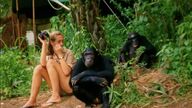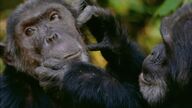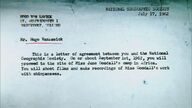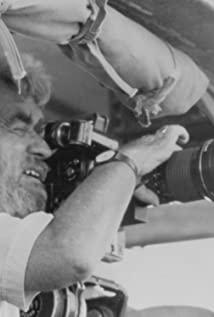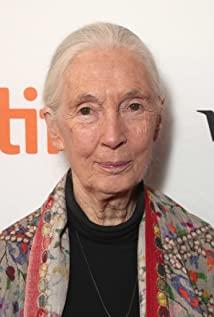As a character who can appear in my country's nine-year compulsory education biology textbook, Dr. Zhen is still quite recognized in the industry. In addition to being dedicated to academic research for decades, Dr. Jane is more important for the protection of chimpanzees and their living space around the world in the next three decades. To a certain extent, she has transformed into a social activity Home, she also realized that the world without the protection of capital intervention and empty talk of research is meaningless.
The documentary, compiled in 2014 from 100 hours of footage shot in the 1960s by National Geographic photographer Hugo Van Lawick, is narrated by Dr. Jane. As a child of a single-parent family, Jane has been independent since she was a child. She has an infinite yearning for the natural world in Africa. She first came to a farm in the Kenyan highlands in 1957 as an assistant. University was not Jane's first choice at the time, and she returned to London to work as a waitress for a while, with the goal of saving money to return to the continent. In 1960, at the recommendation of a friend, Dr. Louis Leakey, an anthropologist and paleontologist, invited her to study wild chimpanzees in the Gombe Nature Reserve in Tanganyika (now Tanzania, Tanzania). Dr Leakey did not discriminate against Jane, who did not have a university degree, and recommended her for a PhD in ethology at Cambridge University. In the 1950s, the academic field of animal behavior was not so friendly to women, especially for her perceptual research method of actively shortening the distance with the chimpanzee group, but she disagreed. She used the delicate personality traits of women in her studies of chimpanzee group behavior, naming members of the group, giving them food, and building trust with them. At the same time, she also harvested research results, she found that chimpanzees also use tools to capture termites (termite), she found that each individual chimpanzee also has its own different personality, and their own way of expression, these discoveries redefine Academia's perception of chimpanzees.
Jane under Hugo's lens is frank and natural, with the shyness of a young woman facing her beloved. As an excellent photographer, he recorded Jane's day-to-day research on chimpanzees, documenting her harmonious coexistence with the chimpanzee family, their love, and their child Grub. The two are serious about love. The young family of three left behind happiness, sweat and sweetness in the African rainforest.
However, love that is too like-minded often leads to strangers, especially both parties with idealistic plots. When neither of them is willing to let go of their career pursuits, the two sides choose to go their separate ways. Can't help but think of Andrew Lloyd Webber and Sarah Brightman in the drama world. She has made his writing and trickle-down talents. He tailored amazing plays and roles for her, and made her a generation of opera divas, but the two. Personal marriages cannot escape the "seven-year itch", and the former "high mountains and flowing water" world of bosom friends no longer exists. People who may be too ideal are not suitable for marriage. Jane, who has been an independent woman since she was a child, has no regrets and ended her ten-year marriage in 1974.
The two are still friends, Jane has become an expert in Gombe chimpanzee research, and Hugo is still active on the Serrigati grassland as an excellent photographer. The two people who have no marriage bond, shine in their respective fields. .
Sixty years later, Jane, as the daughter of the Gombe Reserve, is still running for the future of the reserve. In her eyes that are no longer young, she can still see the look that has not changed sixty years ago, despite these efforts. It has not changed the reality that protected areas in Africa are being eroded, but she is still in action.
View more about Jane reviews




